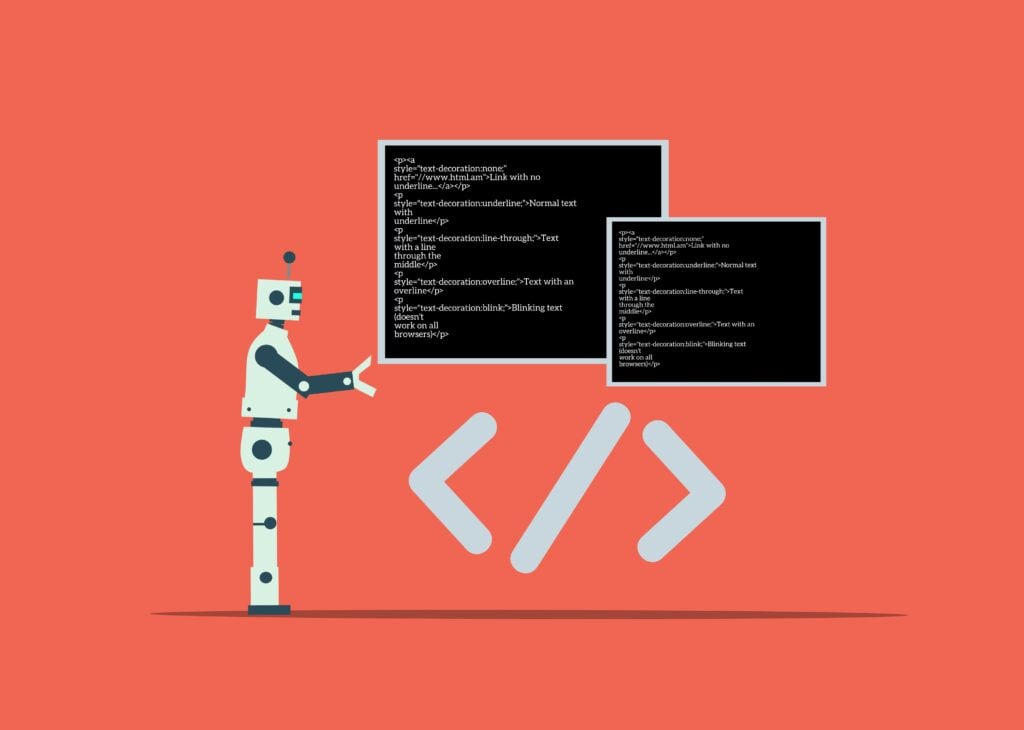

Summary
This blog outlines how organizations can use AI to deliver personalized customer experiences by taking three key actions: automate routine tasks to free up teams for strategic work, embed GenAI into workflows to boost speed and agility, and apply predictive analytics to anticipate and meet customer needs.
Actionable strategies include piloting AI with real behavioral or IoT data, building low-code solutions for fast deployment, and using GenAI for dynamic pricing or personalized recommendations.
The takeaway: by integrating AI thoughtfully and monitoring its impact, businesses can drive efficiency, enhance customer satisfaction, and stay ahead in a competitive landscape.
There is no arguing that AI technology has been a game-changer for all business functions.
Automation can handle repetitive tasks, such as reminders and basic updates, freeing business managers and leaders to focus on high-value interactions that require empathy and strategic thinking.
In 2022, (which seems like yesterday, but in AI-years, it’s light years!), McKinsey predicted how the data-driven enterprise of 2025 would look like: “By 2025, smart workflows and seamless interactions among humans and machines will likely be as standard as the corporate balance sheet, and most employees will use data to optimize nearly every aspect of their work”.
A fairly bang on prediction, we say. McKinsey foresaw how data is embedded in every single decision, interaction, and process, and that in 2025, “nearly all employees naturally and regularly leverage data to support their work”.
What’s the role of GenAI in business strategy?
According to Gartner®, “by 2027, 50% of data analysts will be retrained as data scientists, and data scientists will shift to AI engineers”.
Gartner forecasts that “by 2027, 75% of new analytics content will be contextualized for intelligent applications through GenAI, enabling a composable connection between insights and actions.”
We believe this shift highlights how GenAI is set to play a crucial role in transforming data into actionable strategies, thus enhancing decision-making processes across various business sectors.
Adopting GenAI swiftly will be crucial for tech CEOs aiming to stay competitive. As Gartner notes, “GenAI is poised to accelerate all aspects of a tech CEO’s business.
Winners will be those who adopt the technology innovation quickly to gain an advantage. From the way the organization is managed to how products and services are sold to customers; the defining characteristic is speed.”
Moreover, by 2028, the rapid pace of AI innovation may limit the duration for which new software features provide a competitive edge, potentially narrowing it to just six months.
As Gartner also predicts, “by 2028, new feature and function-driven software product differentiation will achieve at most a six-month competitive advantage due to rapid AI innovation.” We believe this highlights the need for ongoing innovation and agility in business strategies to maintain market leadership.
How to balance AI innovation with traditional automation?
While these technological advancements offer significant opportunities for increased efficiency and productivity, they also require careful management.
As Gartner cautions, “GenAI is poised to have a profound impact on how work gets done. The implications are beginning to play out, and these predictions point the way toward a more productive digital employee experience. Not all consequences are positive, and oversight is needed.”
While GenAI will influence design, development, and data integration, we believe that the essential orchestration of processes will remain with existing digital and robotic process automation platforms.
Craig Le Clair, VP and principal analyst, encapsulates this approach to technological integration by suggesting that by 2025, decision-makers need to strike a balance between AI innovation and the reliability of traditional automation methods.
As he writes, “for 2025, decision-makers can balance AI innovation with the scale and reliability of traditional automation tools and methods by recognizing that deterministic automation will remain in control of the core, long-running process while AI models will support bursts of insight and efficiency.”

How to leverage AI and machine learnin to predict the future?
Today, the integration of AI and machine learning (ML) into business operations has reached new heights, particularly in the realms of predictive analytics and personalized customer experiences and hyper-automated and autonomous operations.
By leveraging AI/ML, organizations can analyze vast datasets to identify patterns and trends that fuel predictive analytics, allowing businesses to anticipate customer needs and market shifts with remarkable accuracy. This foresight enables companies to make proactive decisions, improving operational efficiency and strategic planning.
Additionally, AI/ML enhances personalized customer experiences by tailoring interactions based on individual preferences, behaviors, and past interactions.
From personalized product recommendations to custom-tailored marketing content, AI-powered insights enable businesses to engage customers on a deeper, more meaningful level, fostering increased loyalty and satisfaction.
As AI and ML technologies continue to evolve, their capabilities in refining predictive analytics and crafting bespoke customer experiences will further transform how businesses operate and connect with their audiences.
What’s more, as Gartner writes, “by 2029, 80% of human decisions will not be replaced, only augmented by GenAI, as humans will maintain their comparative advantages in ingenuity, creativity and knowledge.”
What’s trending now is using AI to reinvent businesses by cutting old tech, data, and process debt. This involves using AIOps and AI-driven software development. The goal is to save money, which can then be used to drive innovation, improve customer experiences, rethink costs, and make businesses more agile.
Example: JPMorgan Chase used AI to analyze customer portfolios, proactively suggesting tailored investment strategies. This approach increased customer satisfaction by 20% and opened significant upsell opportunities.
Example: Walmart implemented chatbots for routine inquiries, allowing CSMs to focus on personalized growth strategies with key accounts. This blended model increased NPS scores by 12%.
How to use the Internet of Things (IoT) for deeper insights?
In 2025, the proliferation of Internet of Things (IoT) devices has significantly enhanced the way businesses collect and utilize real-time data for deeper insights. These connected devices, embedded across various industries, continuously generate streams of data that can be analyzed instantly.
In smart cities, for instance, IoT sensors monitor traffic patterns, weather conditions, and energy consumption, providing municipalities with actionable insights to optimize urban planning and resource allocation. In manufacturing, IoT-enabled equipment tracks productivity, machine health, and environmental factors, enabling predictive maintenance and reducing downtime.
In the retail sector, IoT devices provide real-time data on customer foot traffic and purchasing behaviors, allowing retailers to adjust in-store promotions dynamically.
The seamless integration of IoT technology into daily operations empowers enterprises to make informed decisions quickly, improve efficiency, and enhance customer experiences.
As the IoT landscape continues to evolve, the depth and breadth of real-time data accessible to organizations will play a pivotal role in shaping strategic initiatives and achieving competitive advantage.
Watch out for our next blog – all about strategies for CIOs to leverage AI technologies in your business. In the meantime, check out our sandbox approach to drive innovation at scale.
FAQ
Q: How can AI improve customer personalization?
AI and ML models analyze vast datasets—like past behavior, preferences, and interactions—to predict customer needs. This enables real-time, tailored experiences such as product recommendations, custom marketing content, and dynamic service, driving deeper engagement and satisfaction.
Q: What are real-world examples demonstrating AI’s impact?
Major brands are already benefiting: JPMorgan Chase uses AI to offer personalized investment advice, increasing satisfaction by 20%, while Walmart’s AI chatbots free up service reps to focus on strategic customer interactions, boosting NPS by 12%.
Q: How do AI and traditional automation work together?
AI enables bursts of intelligent insights, but core, routine tasks still rely on deterministic automation. For optimal efficiency, blend AI-driven decision-making with robust process automation for a balanced, reliable, and innovative workflow.
Trending articles

Data orchestration: why modern enterprises need a data orchestration platform
Data is pouring in from myriad sources—cloud applications, IoT sensors, customer interactions, legacy databases—yet without proper coordination, much of it remains untapped potential. This is where data orchestration comes in.

How Enterprise Architects can get more support for technology led innovation
Enterprise Architects are increasingly vital as guides for technology-led innovation, but they often struggle with obstacles like siloed teams, misaligned priorities, outdated governance, and unclear strategic value. The blog outlines six core challenges—stakeholder engagement, tool selection, IT-business integration, security compliance, operational balance, and sustaining innovation—and offers a proactive roadmap: embrace a “fail fast, learn fast” mindset; align product roadmaps with enterprise architecture; build shared, modular platforms; and adopt agile governance supported by orchestration tooling.

Why combine an Internal Developer Portal and a Data Fabric Studio?
Discover how to combine Internal Developer Portal and Data Fabric for enhanced efficiency in software development and data engineering.

The differences between data mesh vs data fabric
Explore the differences of data mesh data fabric and discover how these concepts shape the evolving tech landscape.

More from Calibo
One platform, whether you’re in data or digital.
Find out more about our end-to-end enterprise solution.